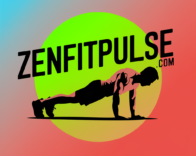
It Is More Than Just To Look Ripped: Strengthening by Muscle Building Over 40 you can be beautiful and prevent the aging problems. With the aging process, our bodies naturally lose muscle mass, and it is more difficult to maintain regular activity. However, the muscle can be maintained and even grown after 40 if you have a well-structured plan that takes in resistance training alongside perfectly backed-up nutrition and recovery.
Since breaking down massive walls of zone by zone building a reckoning, if you will leaves me more room to dig into each causative perspective on and loss up over the age of 40 using be covered every topic all along with custom templates both for training programs eating plans. In so doing, you ensure that you are the very best version of yourself for many years to come: strong, healthy and youthful
Understanding Muscle Loss and Aging
Sarcopenia (muscle loss)—The natural aging process of muscle mass starts around age 30 and more rapidly as we approach and pass 40 years old. It opens the door to a lower metabolic rate, lost strength and potential for falls or injuries. Adults typically lose about 3-5% of muscle mass per decade after 30, however this diminution can be abated and potentially overturned with the proper training and lifestyle alterations.
Hormonal Changes After 40
Muscle Building Over 40 — Hormonal Changes For both men and women, certain hormones key to muscle growth and maintenance drop off into old age.
Testosterone: Testosterone has the key role in muscle protein synthesis and strength. In the case of men, levels of testosterone start to decline by 1-2% per year once they are over 30. Women also have a decrease in testosterone, but at a slower rate
Growth Hormone: Used to repair tissue and as anabolic-muscle building property. Decreased levels of growth hormone can also result in slower recovery and a loss of potential muscle gains. There is organic ways to increase growth hormone production from resistance training as well as good proper diet and nutrition.
Although the muscle-building rules have changed, it is still possible Muscle Building Over 40… you just need to train smart.
Step 1: Focus on Resistance Training

No matter what, if you’re over 40 and want to build muscle, you have to get in resistance-training work. This is the best way to avoid unnecessary muscle loss and spark new gains [1].
Resistance Training – Key Pointers
Compound Movements First: Compound movements such as squats, deadlifts, bench presses, and rows involve several muscle groups at once so they are the most time-effective for building strength and mass.
Progressive Overload: The concept of this is to slowly add more and more weight or resistance in your workouts. If you keep pushing your muscles to adapt and grow, if you want to organize this chaotic entity – then congratulations;
Get The Form Right First: One of the most important things to remember when working out as a senior is that good form is everything. Start with light weights and refine your form before moving onto the much heavier Volumes.
Sample Weekly Workout Plan
Day 1: Upper Body Strength
Bench Press: 4 x 8–10
Barbell Bent-Over Rows: 4 x 8–10 reps
Over Head Press (Barbell) 3 x 8-10
Bicep Curls – 3×10–12
Tricep Dips 3×10–12 reps
Day 2: Lower Body Strength
Squats: 4 sets of 8-10 reps
Deadlifts: 4 sets of 8–10 reps
Lunges (3 sets of 10-12 reps per leg
3 Sets Of 10-12 Reps On The Leg Press
Calf Raises: 3 sets of 15 repetitions
Day 3: Total Body Circuit (Optional)
Push-Ups: 3 sets of 12 reps
Pull-Ups: 3 sets of 8-10 reps
Kettlebell Swings (3×12)
Regular plank, 1 minute x 3 rounds
Step 2: Prioritize Recovery
As we age, our body needs more time to recover from high intensity training. If you do not take enough time to recover, you might experience injuries, fatigue or slow down your results.
Recovery Strategies:
1 SLEEP: Ensure you sleep 7-9 hours per night will allow your muscles to recover and grow(OpCodes) This includes maintaining hormones like testosterone and growth hormone, which can be altered when we are sleep deprived.
Active Recovery — Perform Thursday provides excellent active recovery days with that help incorporate low-impact activities such as walking, swimming or practicing yoga. All of this moves your blood around and gives you a good stretch without hitting those muscles too hard.
Mobility Work: Daily stretching can help improve flexibility, decrease stiffness and prevent injuries. Adding a mobility routine to your workouts, will help you maintain healthy joints.
Step 3: Optimize Your Nutrition

Pic By Ideogram
Your diet is one of the most important aspects of being able for Muscle Building Over 40. This is when your body starts to become less efficient at using when you eat as well, especially protein.
Key Nutritional Guidelines:
Boost Protein Consumption: Protein is essential so as to heal muscling and also to acquire bigger muscles. Every day, try to get between 1.2 — 1.6 grams of protein per kilo of body mass Add good sources of proteins such as lean meats, fish, eggs, dairy and plant-based proteins like legumes or tofu.
Regarding diet, carbs account for energy during workouts and healthy fats help to generate hormones fortify. Get enough complex carbs (oats, brown rice, sweet potatoes) and include some healthy fats (avocado, olive oil, nuts).
Stay Hydrated: Key for muscle function and recovery. Sixth, throughout the day (and especially around your workouts) drink plenty of water.
Knowing the best muscle building supplement for over 40
Protein powder– A convenient way to hit your protein target if you find it hard to get from whole foods
Creatine: This supplement is very effective at boosting muscle strength and endurance, especially in older adults who are weight-training.
Omega 3 Fatty Acids Omega-3s can help lower inflammation, and support heart health, two things that matter when you lead an active lifestyle.
Step 4: Adjust Your Training Frequency and Volume
The fact is, your joints may not hold-up as well or as easily recover from more intense training when you are over 40. That is why it is so vital to meter workout frequency and volume based on how your body feels.
Adjusting Your Training:
If you feel soreer than normal or feeling fatigued, more rest is required for recovery process. Instead of trying to get in there more times per week, you might find training your muscle group 2-3 days a week and taking proper rest-days is going to help you even more.
Dont Train Too Much: Training is great, but overtraining will leave you feeling burned out and it could even result in an injury. Just ensure that you are working out hard, but not to the point where you are so sore and tired all of the time.
Step 5: Stay Consistent and Be Patient
Unfortunately, packing on muscle after 40 is tough. You have to be consistent and patient! It is even more important to accept that where you once begun on your own weight loss journey, may not be the same with weight loss at 40 — and the progression from it may take longer.
The good news is that with a little patience and hard work following a consistent training routine and nutrition plan, you will gain or be back to normal in no time.
FAQs About Muscle Building Over 40
Q1. Can I build muscle after 40?
So the answer is yes, You can build muscle after 40. It would simply likely take longer because the hormone changes associated with age, as well as general recovery processes by the body, will be a bit slower than when you are younger, but it is possible with your optimal program for workout and nutrition plus rest time.
Q2. How Much Protein to Build Muscle After 40
You should be getting 1.2-1.6 grams of protein per kilogram of bodyweight, per day. Protein is important for repairing and building muscle, and older adults may need more protein to help maintain muscle mass.
Q3. Is weightlifting safe for those over 40?
Weight lifting is a healthy practise for those over 40 fatigue so as long they stick to doing it with a good technique. While starting at low weights and progressively overload to escape injury.
Q4. How many days a week should you do weight training to build muscle over 40?
Strive for 3-4 workout sessions/week that consist of resistance training. And remember to recover well between training sessions to prevent overtraining and injury!
Q5. To supplement or not to supplement for muscle building after 40 ?
While certain supplements, such as protein powder, creatine and omega-3 fatty acids can aid in muscle building over 40, they should be a long way behind a balanced plan of regular meals. Say always talk to your doctor before you start any new supplements.

Conclusion
You may need to change your approach a bit when it comes to building muscle over 40, but with the right tools in your arsenal, you can absolutely get there. Combating the natural loss of muscle mass and strength as you age can be achieved through resistance based training, refining your nutrition and ensuring recovery is prioritised.
Knowing why you have to lose muscle and readjusting your diet and workout, if necessary, will help you cope up with loss of muscle, maintain a level of fitness during the period and get healthier; without ruining all the work that went in over years maintaining that lifestyle.
Results may come slower than you would like, but over the long-term following a solid program is what counts. Listen to your body and recover, be patient. Hope you enjoy this Step-by-Step guide on looking jacked & shredded well into your 40’s,50’s and beyond.
Discover more from zenfitpulse
Subscribe to get the latest posts sent to your email.

